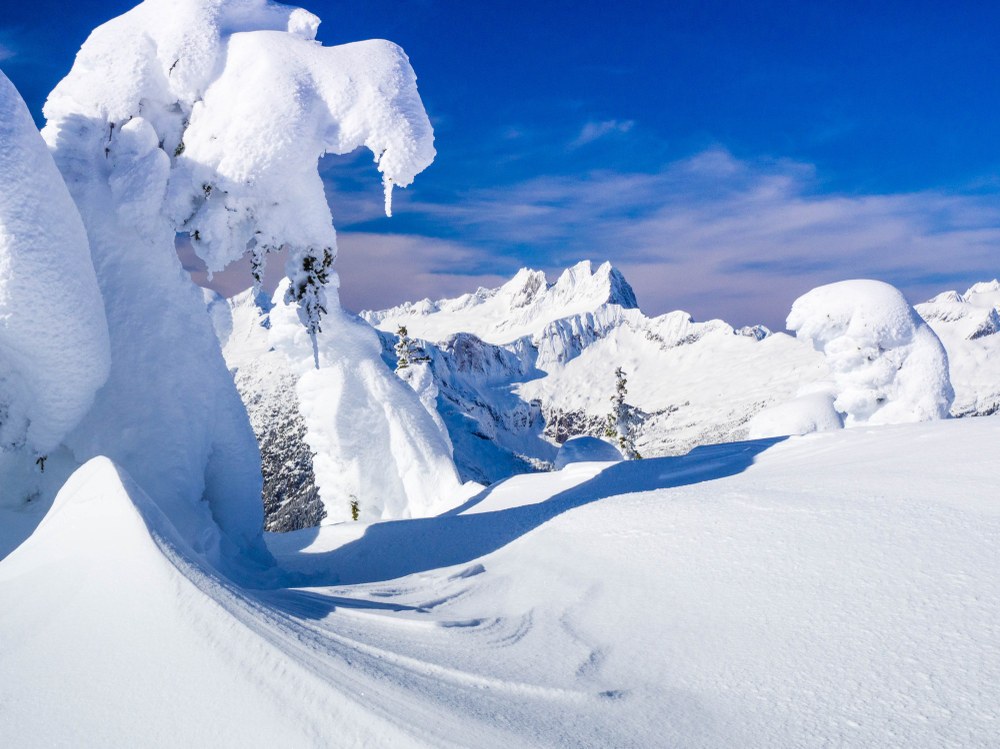
In the dark days of winter, one of the few reliefs we have from the gloomy weather is the promise of snow. Uncommon in the lowlands west of the Cascades, snow is a treat reserved for just a few days every year, blanketing the damp Northwest in a sheet of white. As a result, lowland snow days are a hectic delight. School is cancelled, roads are salted, snow plows deployed, and the Midwesterners shake their heads at our four inch dusting. Each year we act like it’s a surprise – and it may just be that it’s more fun that way.
Of course, the caravans leading to Snoqualmie and Stevens Passes, Mt. Baker, and Crystal Mountain every weekend show the appetite of many snow-starved urbanites. Powder hounds flock to ski resorts from November through April, and lines are full, even on days when we’ve been blessed with yet another layer of Cascade concrete. The atmosphere is permanently festive, and – unless you’re vying for a spot by the fire – friendly.
Whether you see it twice a year or every winter weekend, most in the Pacific Northwest can agree that there are few things more charming than a snow day. In celebration of our love for snow, we wanted to share a few facts that might change how you see our winter wonderland:
Snow isn’t white
Although snow may appear white when you look across the hilltop, it’s actually translucent. Snow is made of ice crystals, and when light strikes each crystal it’s reflected and bounced off rather than absorbed. As a result the entire light spectrum is reflected back at us, which we perceive as white.
…But it can turn pink
Known as watermelon snow, snow algae, pink snow, red snow, and blood snow, this curiously-colored snow is caused by the growth of the algae Chlamydomonas nivalis. This algae contains red pigment in addition to green chlorophyll, and grows in freezing water. It often makes its appearance in spring and summer in alpine environments, when the increase in light, water, and nutrients allows it to germinate. Although watermelon snow has been present for quite some time (early accounts are attributed to Aristotle), it poses a threat to our already at-risk glaciers, as the dark color absorbs light and causes glacial melt to accelerate.
Snowflake shape depends on atmospheric conditions
Snowflakes form when a very cold drop of water freezes with a particle of dust or pollen in the air, creating an ice crystal. As this ice crystal falls, water vapor freezes onto the crystal causing it to grow. Although the ice crystal will always have six sides (and all sides are identical), its shape varies depending on the temperature and humidity of the air. As the snowflake moves down through the atmosphere, the changing conditions affect how the next layer of water molecules forms on each arm. The difference can be substantial. For instance, long needle-like ice crystals are seen at 23 degrees, and flat, circular crystals form at 5 degrees.
Snow is insulating
Falling in snow without proper protection can certainly result in a cold day on the ski hill, but snow itself is actually quite insulating. Because of its chemical structure, snow consists of 90-95% trapped air in between all of those water molecules. This is the reason why so many animals burrow into snow in winter to hibernate, and why igloos and snow caves are such effective shelters in cold, bitter environments. They block wind better than your four season tent can, too.
Yodeling won’t cause an avalanche
Despite what some '80s movies would have you believe, yodeling or yelling won’t cause an avalanche. Scientists estimate that it takes around 200-500 pascals (Pa) of pressure to trigger an avalanche, even one that’s close to springing on its own. In fact, the explosives used to trigger avalanches by ski resorts put out 1,000-1,500 Pa. Comparatively, the human voice can exert around 2 Pa – not nearly enough to displace snow.
This article originally appeared in our Winter 2021 issue of Mountaineer Magazine. To view the original article in magazine form and read more stories from our publication, visit our magazine archive.
 Hailey Oppelt
Hailey Oppelt